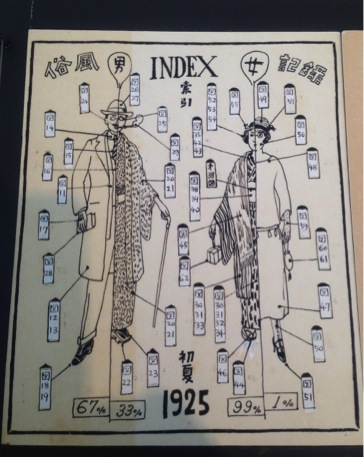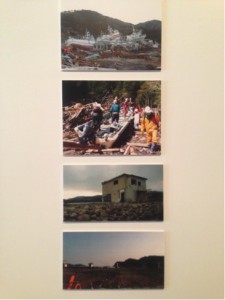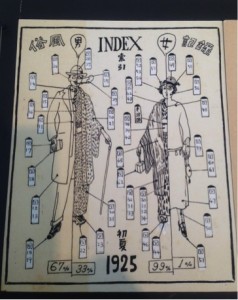Jessica Tomoko Perez is a Japanese and Korean culture enthusiast, living and working out of NYC. She is a former contributor to #Quakebook project: ‘2:46: Aftershocks: Stories from the Japan Earthquake’.
I had the pleasure of attending “Design and Disaster: Kon Wajiro’s Modernologio” exhibit, housed at the Arnold and Sheila Aronson Galleries at Parsons The New School for Design in downtown New York City. “Design and Disaster,” a very fitting title, explores the intersections between seikatsu (daily life) and the aftermath of tragedy – in this case, the Tokyo earthquake of 1923.
The exhibition, which premiered just two days after the third anniversary of the Great Tohoku Earthquake and triple-disaster in 2011, was open to the public until March 27th. Kon Wajiro’s work is a sociological survey of urban life, touching upon the often looked-over and taken-for-granted intricacies of daily routine.
As you enter the exhibition, the pieces are separated and titled by section. Each section displays several pieces — mounted on a lightweight, rectangular, shelf-like construction, suspended from the ceiling by wire. As you walk through the exhibit, the displays themselves, though mostly still, sway delicately.
Section One, which offers a peek into life immediately following the earthquake, shows a collection of photographs. These photos depict the barakku (barracks) that were set up to house survivors of the tragedy. Kon, both design and architecture-savvy, collaborated on a barracks design project with buddy, Yoshida Kukichi. Their goal was to decorate both the interior and exterior of these barakku. I wondered if any of the ones depicted here were the result of their work. To successfully envision and create a new space called ‘home’ — as temporary as it may have been, is the literal manifestation of design and disaster. At the time, Kon, observing the way in which design met necessity, met ideas of comfort, and of functionality, praised the people of Tokyo for their ingenuity in the building of these barakku.
Section Two is a transition toward a more calculative and analytic approach to understanding the urban developments in mid 1920’s Japan. Kon studied the customs, fashion, and social mores of Tokyo and Ginza. His public surveys brought him to Koenji and Asagaya, among other places. His illustrations depict the study of pet ownership in these areas, street mercantilism, and clothing. In a time of increasing consumption and capitalism, what struck my interest was the way the external makes its way into the psyche of a people; how it slowly transforms and shifts the private and the public, blending the two. One of the most stunning pieces was an info graphic piece on Western and Japanese clothing for both men and women. Definitely worthy of a few reblogs on Tumblr, if you ask me.
This view of architecture and the decorative as the intermediary between the personal and the public shows itself from the photos of emergency housing, to the sketches of the personal wardrobe. What objects people kept in their homes and the manner by which these objects, these building blocks are organized, show us a time and place where we are the architects, builders, and interior designers. The remaining sections, depicting fragments of life — a chipped serving bowl here, the wear and tear of a high school students’ uniform there, are the cut-outs of a collage that come together in a not-so-neat way that is easy to appreciate.
Ultimately, Kon’s collection, though inspired by the tragic, offers up hope where the current generation turns around to the blueprints of the past behind us, hoping to build something great and lasting before us. Then, and now, as we exist day by day in the present, we materialize our constantly evolving lived experience to build something beautiful for the future.
To quote Kon Wajiro: “I believe the work of decoration is to fill people’s living spaces with dignity….People usually call the production of beautiful colors and harmonized patterns decoration, but I think that such formal approaches lead to merely ephemeral expressions, and are not the real work of decoration. I think the work of decoration is to express the real and practical ways of people’s life.”
Three years following the Great Tohoku Earthquake, it is my hope that those who are still without permanent shelter, who cannot return home, who miss their loved ones, who seek those yet to be found, can fill their living spaces, their minds and hearts with dignity and warmth.
For more on Kon Wajiro, please check out his book here, available on Amazon.



Hi, I think there’s been a problem with the images link.
Indeed, you are quite right. My apologies. I will fix the error immediately. Thank you for pointing it out.
Angela Erika Kubo
JSRC Assistant Editor